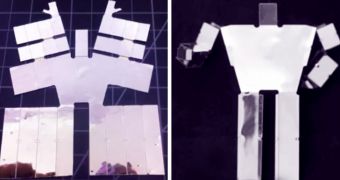Thanks to researchers with Massachusetts Institute of Technology, the day one can show off their cooking skills by baking not a pumpkin pie or a delicious steak but a robot might soon we upon us.
This fairly odd idea of developing a technology that would make it possible to bake robots was presented at this year's IEEE (the Institute of Electrical and Electronics Engineers) International Conference on Robotics and Automation by researcher Daniela Rus and her colleagues.
As detailed on the official website for the Massachusetts Institute of Technology, the goal is to develop printable robotic components that, when exposed to heat, would fold and take the shape of three-dimensional structures.
Daniela Rus and her colleagues explain that, in order to create one such robot, one would have to rely on a system that would take notice of the characteristics of a three-dimensional shape and use them to roll out two-dimensional patterns.
These two-dimensional patterns would in turn make it possible for a piece of material to recreate the original three-dimensional structures by means of self-folding, the scientists go on to explain.
In a paper, the Massachusetts Institute of Technology specialists go on to detail that, according to their investigations into the matter at hand, such self-folding laser-cut materials could later be used to piece together electrical components.
Resistors, inductors, and capacitors, as well as sensors and actuators are among the components that the researchers claim could be created in laboratory conditions with the help of this technology.
“We have this big dream of the hardware compiler, where you can specify, 'I want a robot that will play with my cat,' or 'I want a robot that will clean the floor,' and from this high-level specification, you actually generate a working device,” says specialist Daniela Rus.
While it may be a while until bakable robots come our way, Daniela Rus and fellow researchers believe that the idea is not as far-fetched as some people would think. On the contrary, they claim that, courtesy of the progress of science, it is quite feasible.
“So far, we have tackled some subproblems in the space, and one of the subproblems is this end-to-end system where you have a picture, and at the other end, you have an object that realizes that picture. And the same mathematical models and principles that we use in this pipeline we also use to create these folded electronics,” the MIT specialist explains.

 14 DAY TRIAL //
14 DAY TRIAL //